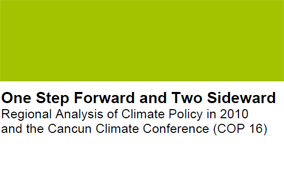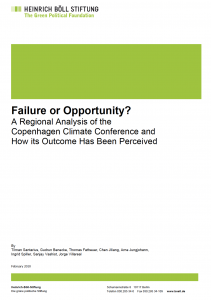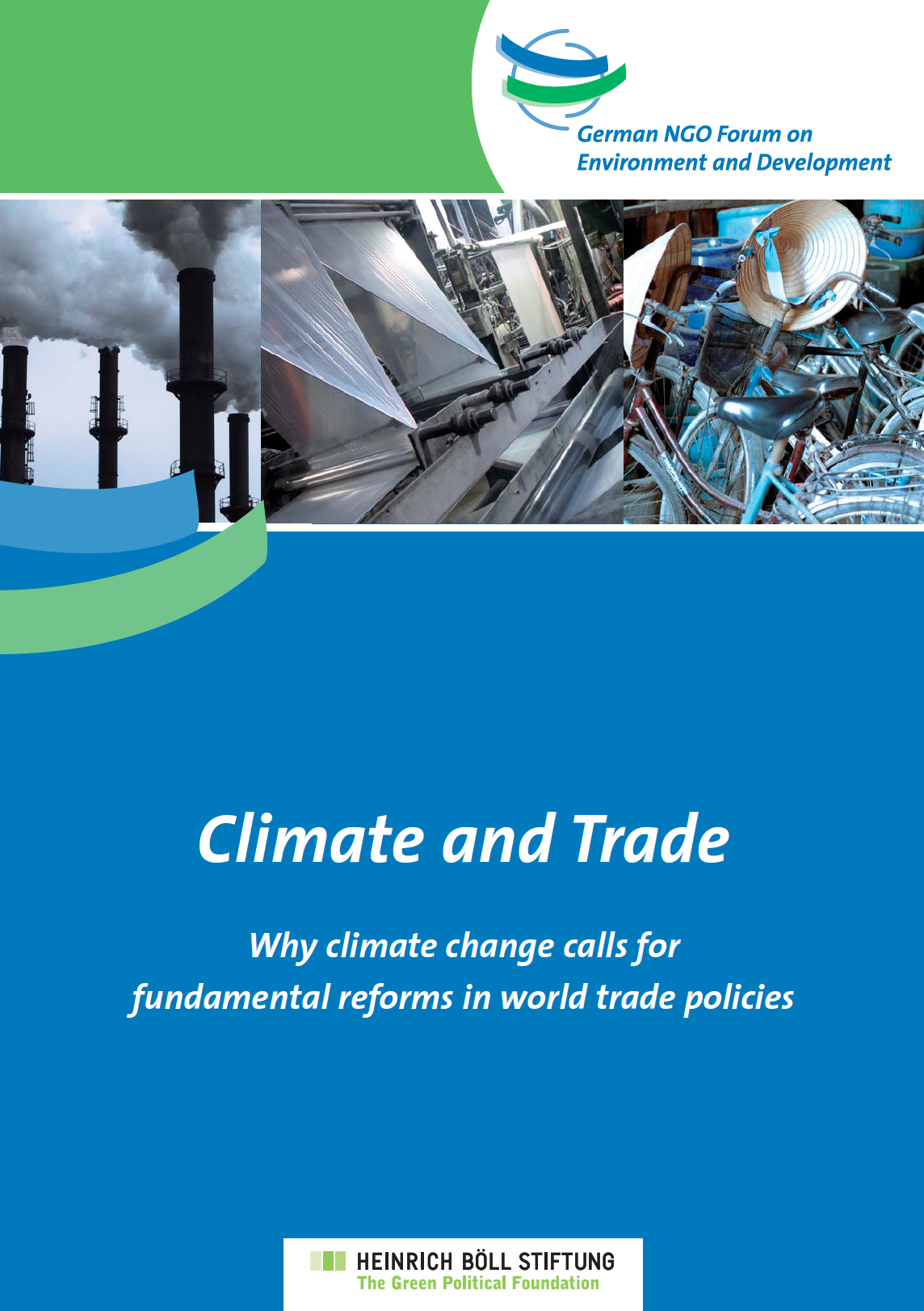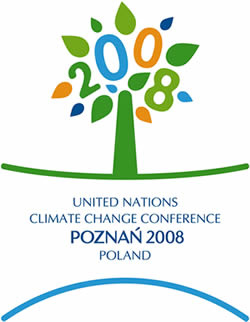One Step Forward and Two Sideward.
 After the “failure of Copenhagen”, the UN climate conference in the following year, COP16 in Cancun 2010, has raised new hopes: the international climate diplomacy does not collapse. But the results of the conference show a mixed picture. In some areas, progress has been made, however, in other dubious compromises were found. In this climate policy analysis “One Step Forward and Two Sideward“, Tilman Santarius together with colleagues from seven other countries show what has been achieved in 2010 in the national climate policy of important key countries, and what key outcomes have been realized at the UN climate conference in Cancun.
After the “failure of Copenhagen”, the UN climate conference in the following year, COP16 in Cancun 2010, has raised new hopes: the international climate diplomacy does not collapse. But the results of the conference show a mixed picture. In some areas, progress has been made, however, in other dubious compromises were found. In this climate policy analysis “One Step Forward and Two Sideward“, Tilman Santarius together with colleagues from seven other countries show what has been achieved in 2010 in the national climate policy of important key countries, and what key outcomes have been realized at the UN climate conference in Cancun.
Failure or Opportunity?
 Throughout Europe, the International Climate Conference in Copenhagen (COP 15) has widely been considered a failure. However, it is unclear how this summit has been perceived in other countries: as a failure, or maybe even as an opportunity? This, it seems, heavily depends on the national perspective. For some countries, such as those of the European Union, the expectations were missed completely. In the U.S. and in Brazil, however, the outcome of the summit had been used as internal political opportunity. Click here for the paper “Failure or Opportunity”, in which Tilman Santarius together with colleagues from several other countries analyzed the results of COP15 from the perspective of central negotiating parties.
Throughout Europe, the International Climate Conference in Copenhagen (COP 15) has widely been considered a failure. However, it is unclear how this summit has been perceived in other countries: as a failure, or maybe even as an opportunity? This, it seems, heavily depends on the national perspective. For some countries, such as those of the European Union, the expectations were missed completely. In the U.S. and in Brazil, however, the outcome of the summit had been used as internal political opportunity. Click here for the paper “Failure or Opportunity”, in which Tilman Santarius together with colleagues from several other countries analyzed the results of COP15 from the perspective of central negotiating parties.
Climate and Trade – Why Climate Change Calls for Fundamental Reforms in World Trade Policy
 Foreign economic and trade policy are mostly designed along by the principles of free trade and export maximization. As a result, the world economy has become interconnected and more dense, and production chains span from one hemisphere to the other. Is this globalized world trade compatible with the aim to keep global warming below the dangerous threshold of 2 or even 1.5 degrees Celsius? Here is the study “Climate and Trade“, which highlights reform options for trade as well as for climate policy. In particular, it raises the issues of displacement of emissions (leakage), border adjustment measures, and technology transfer.
Foreign economic and trade policy are mostly designed along by the principles of free trade and export maximization. As a result, the world economy has become interconnected and more dense, and production chains span from one hemisphere to the other. Is this globalized world trade compatible with the aim to keep global warming below the dangerous threshold of 2 or even 1.5 degrees Celsius? Here is the study “Climate and Trade“, which highlights reform options for trade as well as for climate policy. In particular, it raises the issues of displacement of emissions (leakage), border adjustment measures, and technology transfer.
From a Marathon to a Sprint.
 Only small progress in some areas had been achieved at the UN climate conference in Poznan (COP 14). Solutions to the major conflicts remain to be developed, and answers to most crucial questions persist, such as how to define specific national reduction targets, financial sums, technological cooperation agreements, the regulations of emissions from forests, and others. If this load of decisions is not to be deferred entirely up to the ministerial conference in Copenhagen, negotiations have to move from jogging to the mode of a sprint. Here is the analysis “From a marathon to a sprint” in Environmental Finance magazine.
Only small progress in some areas had been achieved at the UN climate conference in Poznan (COP 14). Solutions to the major conflicts remain to be developed, and answers to most crucial questions persist, such as how to define specific national reduction targets, financial sums, technological cooperation agreements, the regulations of emissions from forests, and others. If this load of decisions is not to be deferred entirely up to the ministerial conference in Copenhagen, negotiations have to move from jogging to the mode of a sprint. Here is the analysis “From a marathon to a sprint” in Environmental Finance magazine.
Pit Stop Poznan.
 One year after the climate conference in Bali (2007), the UN climate conference in Poznan in December 2008 marked only a stopover on the way to the next major conference in Copenhagen, 2009. a new climate agreement. Politically, the conference in Poznan was overshadowed by negotiations in Brussels on a new climate and energy package of the European Union. On many points of detail, however, the climate negotiations in Poznan did move on. Therefore it is worth looking into negotiating texts and individual agreements. Click here for the analysis “Pit Stop Poznan” by Santarius Tilman and his colleagues, a shorter version of which was published in the Journal for European Environmental & Planning Law (JEEPL).
One year after the climate conference in Bali (2007), the UN climate conference in Poznan in December 2008 marked only a stopover on the way to the next major conference in Copenhagen, 2009. a new climate agreement. Politically, the conference in Poznan was overshadowed by negotiations in Brussels on a new climate and energy package of the European Union. On many points of detail, however, the climate negotiations in Poznan did move on. Therefore it is worth looking into negotiating texts and individual agreements. Click here for the analysis “Pit Stop Poznan” by Santarius Tilman and his colleagues, a shorter version of which was published in the Journal for European Environmental & Planning Law (JEEPL).
Developments in International and European Climate Policy in 2003
 Looking back on the international climate policy in 2003, two issues dominated the picture: one is the rather unpleasant uncertainty about the implementation of the Kyoto Protocol and the diplomatic tug of war with Russia, set by the signing of the contract in force at last. Second, the extremely positive introduction of an emissions trading scheme in the European Union. With the introduction of this world’s most progressive climate change policy, the EU could in turn bring new vitality to the international negotiations. See here a pdf of the analysis by Hermann Ott and Tilman Santarius, which has been published in the Yearbook of International Environmental Law.
Looking back on the international climate policy in 2003, two issues dominated the picture: one is the rather unpleasant uncertainty about the implementation of the Kyoto Protocol and the diplomatic tug of war with Russia, set by the signing of the contract in force at last. Second, the extremely positive introduction of an emissions trading scheme in the European Union. With the introduction of this world’s most progressive climate change policy, the EU could in turn bring new vitality to the international negotiations. See here a pdf of the analysis by Hermann Ott and Tilman Santarius, which has been published in the Yearbook of International Environmental Law.